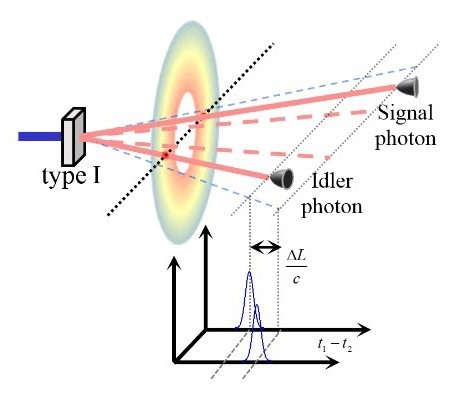2017.07.27
Senior researcher Dr. Hoonsoo Kang of the Advanced Photonics Research Institute (APRI, Director Byeong Ha Lee) at the Gwangju Institute of Science and Technology (GIST, President Seung Hyeon Moon) wrote a paper on quantum mechanical properties of entangled photon pairs in a dispersion medium that was summarized in Spotlight on Optics.
Dr. Hoonsoo Kang published a paper in Optics Express (January, 2017), published an article that showed a pair of photons in an energy-time entangled state when passed through two independent rubidium atomic vapor cells, crossed in a beam splitter, and measured by a two-photon interference (Hong-Ou-Mandel interference) that the dispersion effect was eliminated.
Noticed in 1990, the dispersion cancellation effect is a phenomenon in which the correlation is preserved even after a pair of photons that are strongly correlated in time with the predicted and experimentally realized effects of quantum optics have passed through the dispersion medium. This is one of the few optical phenomena that can only be explained by considering the phenomenon of quantum entanglement of the energy and temporal information of two photons.
In the previous studies, the dispersion factor of the medium was very small, and the dispersion cancellation effect was shown only when the second dispersion factor was considered. The significance of this study is that the dispersion canceling effect occurs for a medium with arbitrary dispersion irrespective of the dispersion coefficient of the medium, indicating that the two photons are due to energy-time entanglement. This experimentally demonstrated the universality of the non-classical properties seen in the dispersion of photon pairs in energy-time entangled states.
Spotlight on Optics selects a limited number of monthly papers from a number of journals published by the American Optical Society (OSA) that are considered important enough to share among optical researchers.
Paper:
All-order dispersion cancellation and energy-time entangled state:
https://www.osapublishing.org/oe/abstract.cfm?uri=oe-25-2-1360&origin=search













